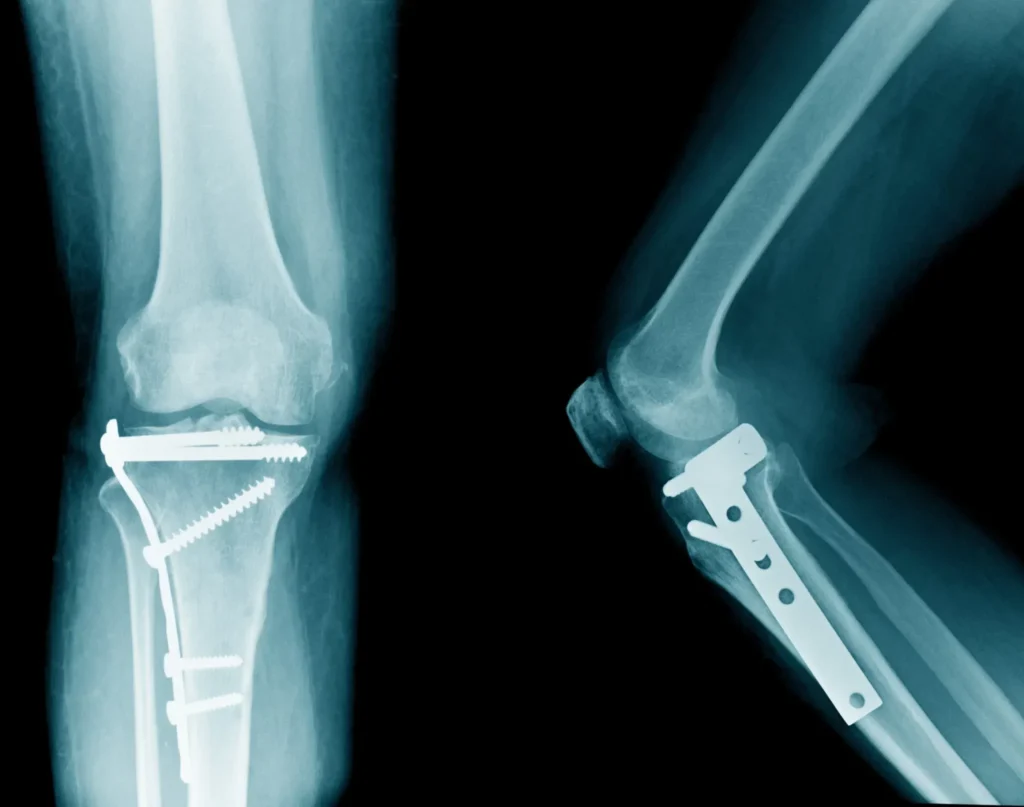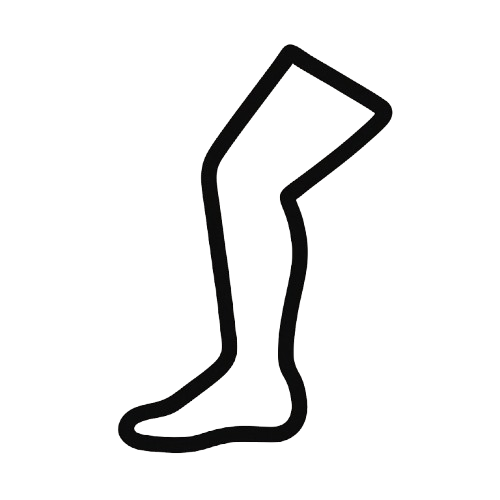The leg is a complex system made up of bones, muscles, tendons, ligaments, nerves, and joints that work together to enable movement and support body weight. The leg is divided into three main regions

The largest bone in the body, connecting the hip to the knee and supporting most of the body's weight.

Two bones running from the knee to the ankle; the tibia bears the majority of weight, while the fibula provides stability.

Critical points that allow for flexibility and movement, while providing stability and shock absorption.

Leg injuries can range from minor muscle strains to complex bone fractures. Recognizing these common conditions is essential for effective treatment and recovery.

Leg fractures are one of the most common and serious leg injuries. These injuries typically occur due to high-impact accidents like car crashes. simple breaks to compound fractures where the bone pierces the skin.

The knee is a highly complex joint, vulnerable to injuries such as torn ligaments (ACL, MCL), dislocations, and meniscus tears. These injuries often occur in car accidents, falls, or sports-related incidents

Ankle injuries, such as sprains, fractures, and dislocations, can occur in car accidents, falls, or while playing sports. While minor sprains like fractures or dislocations may require surgery and physical therapy.

Injuries to the nerves in the leg, such as sciatica or nerve damage from a severe fracture, can cause long-term pain, numbness, and weakness. Nerve damage may result from direct trauma, surgery
Leg injuries vary in severity, ranging from mild strains to severe nerve damage, joint damage, or fractures. Understanding these common conditions is crucial for proper treatment.

Car accidents frequently cause leg injuries due to the impact of collisions, when the legs are pinned or crushed. Fractures, dislocations, and ligament tears are common in car crashes

Sports-related leg injuries are common in high-contact sports like soccer, football, and basketball. sprains frequently occur, sometimes due to inadequate safety protocols or faulty equipment.

Slips and falls are a leading cause of leg injuries, particularly fractures and sprains. These accidents often occur in public spaces, hazardous conditions like wet floors, uneven surfaces


If you sustain a leg injury at work, you may be entitled to workers’ compensation. if a third party, such as a contractor or equipment manufacturer, was responsible

Pedestrians and cyclists are particularly vulnerable to leg injuries in traffic accidents with motor vehicles often result in fractures, dislocations, or severe ligament damage.
Understanding the cause of your leg injury is crucial for determining liability and securing proper compensation.
Leg injuries can lead to ongoing complications, from limited mobility to chronic pain. Proper treatment and long-term care are essential for full recovery and quality of life.
Rehabilitation is key to restoring movement, strength, and balance. A personalized therapy plan helps patients regain function and prevent re-injury.

Severe fractures, ligament tears, or joint damage may require surgery to restore stability or mobility. Recovery varies based on injury and procedure.

Chronic pain is common after serious leg injuries. Multimodal treatment plans can help manage discomfort, medications and improve daily function.

Understanding the various types of compensation available can help ensure you receive fair and complete coverage for your injuries.

Compensation for immediate and ongoing medical care, including surgeries, rehabilitation, physical therapy, and assistive devices.

Reimbursement for time off work and future income loss due to temporary or permanent limitations caused by the leg injury.

Non-economic damages for the physical pain and emotional distress caused by the injury, including impact on quality of life.
Important legal factors that can affect your leg injury claim and potential compensation.

Legal deadlines for filing your claim vary by state. Missing these deadlines can prevent you from seeking compensation.

Your compensation may be reduced if you’re found partially at fault. Understanding how fault is determined is crucial.

Previous injuries or conditions may affect your claim. Proper documentation and medical evidence are essential.
The time limit varies by state but is usually between one to three years from the date of the injury. It’s important to file as soon as possible to avoid missing deadlines.
Compensation may include medical expenses, lost wages, pain and suffering, disability benefits, and other related costs depending on the specifics of your case.
Knapp Moss works exclusively on a contingency fee basis, meaning you pay nothing upfront and the firm takes a percentage of any settlement or award. We don’t make any money until we win your case and get you paid.
Case duration varies depending on complexity, insurance negotiations, and court schedules. Some cases settle within months, while others may take years.
By clicking Sign Up, you are confirming that you agree with our Terms and Conditions.